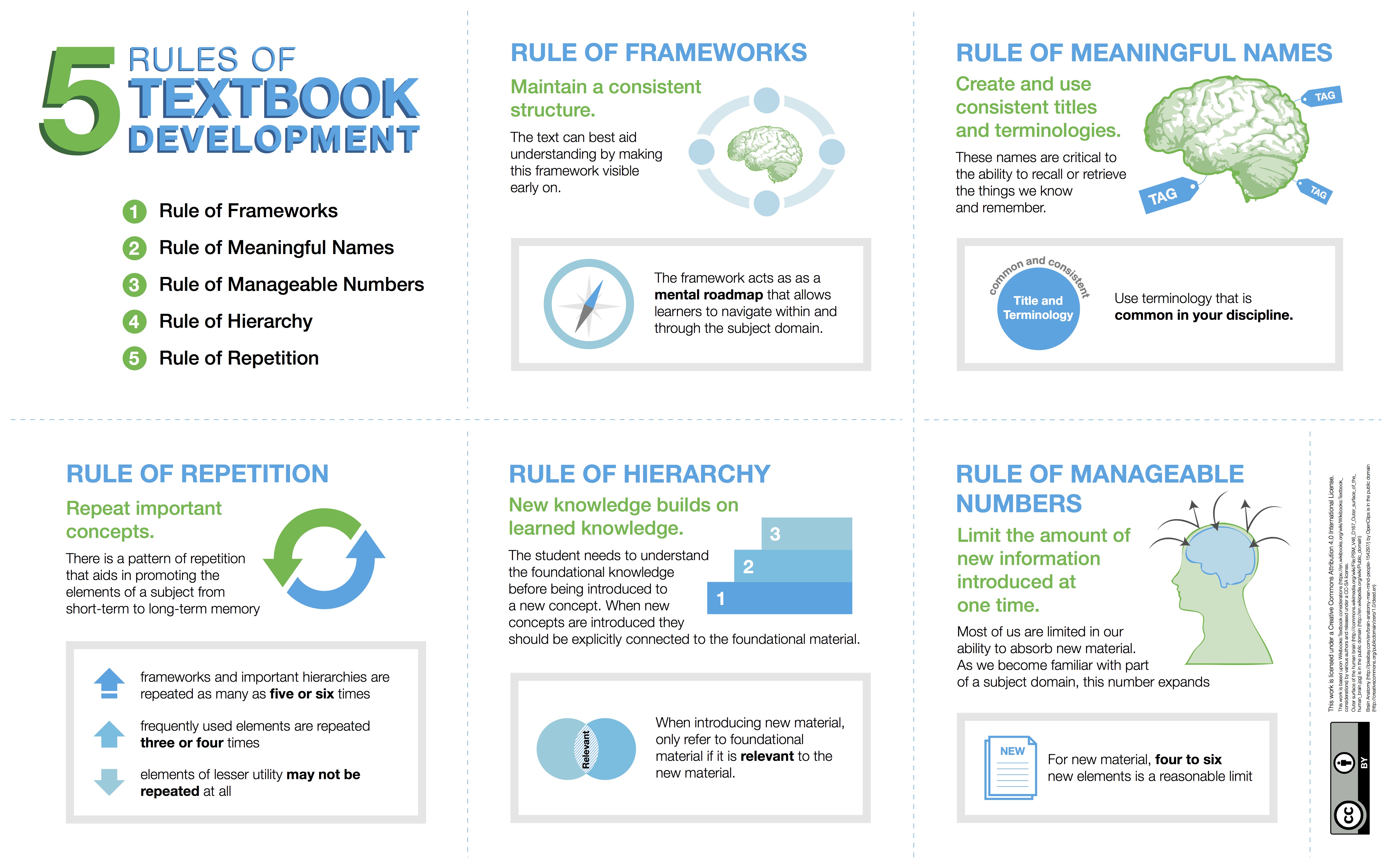
While the advice on this page focuses on OER in book format, resources and guidance is also applicable to OER in other formats.
Before you commit to writing a new open textbook, it’s worth reviewing some existing open textbooks to see if you could adapt them to suit your needs.
Some points to consider when evaluating an open textbook for adaptation:
There are a number of checklists and resources available to support OER evaluation, including examples from Deakin University and The University of Queensland.
If an open textbook meets most of your criteria, consider whether you could make some modifications to improve its quality and usefulness (for example, through editing, revising or replacing content).
You’ll need to weigh up the scope of these changes with the work involved in producing a new textbook to help you decide on the best option for your project.
One of the hardest parts of adapting an open textbook is maintaining consistency across existing and new content.
When modifying or adding new content to an existing open textbook, you’ll need to try to match the style, structure and layout of the original textbook as much as possible.
Some areas you’ll need to watch out for are:
Some general rules of design to keep in mind when you’re planning your open textbook:
Before you start writing, you’ll need to outline details of how you’ll build and arrange your textbook, including:
In your outline, you’ll need to consider the:
As you’re writing your outline, keep in mind five rules for developing a good textbook:

‘5 Rules of Textbook Development’ in Self-Publishing Guide by Lauri M. Aesoph, based on Wikibooks:Textbook considerations, licensed under a CC BY 4.0 licence.
Adapted from:
‘Make a Plan’ in Adaptation Guide by BCcampus, licensed under a CC BY 4.0 licence.
‘Adapting or Authoring’ and ‘Designing a Textbook’ in Authoring Open Textbooks by Melissa Falldin and Karen Lauritsen, licensed under a CC BY 4.0 licence.
‘Textbook Outline’ in Self-Publishing Guide by Lauri M. Aesoph, licensed under a CC BY 4.0 licence.
‘Five Rules of Textbook Development’ in Self-Publishing Guide by Lauri M. Aesoph, licensed under a CC BY 4.0 licence, which was adapted from Wikibooks:Textbook Considerations, used under a CC BY-SA 3.0 licence.
Effective planning is critical to the success of an open textbook project. Sitting down with authors and working through the information in the 'For Authors' section of this step is a helpful strategy for ensuring authors have a well-developed plan for their textbook. In particular, focus on the design and outline of the textbook. Encourage authors to document their plan and share it with everyone on the authoring and publishing teams.
Authors will require input from library staff at key points in the production process, across all stages of the workflow. Read through the guides in the workflow to see where library staff will need to work with authors on tasks such as copyright checking, peer review and publishing. Review the authors' time line and make a note of when you might expect to be called on to provide assistance when you or another expert/library staff member might expect to be called on.